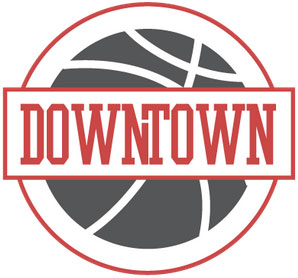The NBL’s Place to Be Seen
If a combine for NBL hopefuls ever becomes a regular, successful thing, then the event that took place on Monday and Tuesday will be worth remembering.
About 57 players gathered at the State Basketball Centre in Melbourne for the two days of the inaugural Australian National Pro Combine. The idea was they’d get a chance to impress coaches in attendance, including many from the NBL.
Joey Wright, Eric Cooks, Jamie O’Loughlin, Andrew Gaze and Simon Mitchell were among the NBL coaches watching as locals and imports from the SEABL and state leagues competed.
The event was organised by W Sports and Media, a talent representation group, and was endorsed by the NBL. A media release by the league called the combine a “unique and first of its kind event in Australia.” It was a humble but well-received beginning.
“I thought it was run really well, because I know it’s the first year and some things can be disorganised or slow, but I thought they did a really good job of keeping it organised, keeping guys motivated,” said Isaac Turner, an import guard who’s leading the Waratah League in scoring.
The attendees had their athleticism and skills measured through drills and sports science tests and were grouped into six teams for scrimmages. Darryl McDonald, combine host Phil Smyth, Matt Shanahan and O’Loughlin were among those coaching the teams.
Not all players were NBL-calibre or thereabouts, but there were some with established links to the league, like former development players Matt Andronicos and Brent Wallace, and some with strong second-tier numbers, like the SEABL’s Jeremy Kendle.
The atmosphere wasn’t quite cutthroat—one player played in tracksuit pants and a hoody underneath his combine singlet—but the standard was high enough for participants to make a meaningful impression.
“It’s good for guys that are trying to make a name for themselves,” Turner said of the combine. “They may be in one region of Australia and they might not get a chance to play in front of some guys, so I think it brings a lot of talent together onto one spot. It could be really beneficial for coaches to kind of get a feel for what’s out there.”
O’Loughlin, an assistant coach with the Perth Wildcats, was supportive of the concept.
“This was a good starting point, but I think there’s a lot of things that we could improve on and make it even better and tighter and more transferable to the NBL,” he said.
One potential improvement O’Loughlin suggested was tailoring the style of the games at the combine. If NBL coaches gave a consensus list of what they want to see when they assess players, then the games could be coached to include those things.
Involvement like that from the NBL is important, according to O’Loughlin, because if NBL teams are paying attention, then quality players will attend. And that’ll facilitate guys making the jump from the second tier to the NBL.
“I think it’s very, very helpful if the league’s behind it and part of the process,” he said.
NBL teams will fill roster holes and add development players in the coming months. What happens in that time could help determine the success of the combine, according to Richard Bolaffi, the director of Australia and New Zealand Basketball Scouts.
“Obviously the paramount part of success is for players out of this combine to get contracts from NBL teams, because that will determine actually its longevity and its sustainability,” said Bolaffi, who wrote bios of the participants at the request of W Sports and Media.
He added that if players get contracts, player interest in the combine for next year would probably double and more head coaches would attend.
There are few NBL playing jobs overall, and less are available once the established locals and usual batch of incoming star imports are accounted for. But rosters have expanded to 11 and, as Bolaffi noted, the allowance of a third import per team gives foreigners a better chance of landing a contract, and teams need development players.
Mathiang Muo isn’t either of those, but could be the first combine success story. He signed a three-year deal with the Perth Wildcats in 2013 after attending Charleston Southern University. An Achilles injury kept him from playing in 2013-14 and he was released from his deal in 2014 before playing 15 games in ’14-15 for the Wildcats as an injury replacement.
He hasn’t latched onto an NBL team since.
“You kind of expect something like that to happen after you have a major injury,” Muo said. “In my mind I knew it was going to be a long process, so I just told myself to just keep working and then when it happens, it happens.”
He’s been playing in the SEABL this season under CJ Bruton at the Brisbane Spartans. He chose that league to help his exposure, and while he does get seen there, the chance to further increase his odds drew him to this week’s combine.
“There’s a lot of kids out [there] who, like myself, really want the opportunity to be in the NBL or any other league, and then if they have something like this, then they can come and showcase their skills,” Muo said. “And you never know what happens after that. It might open gates for not just them, but the next generation.”



Please comment with your real name using good manners.